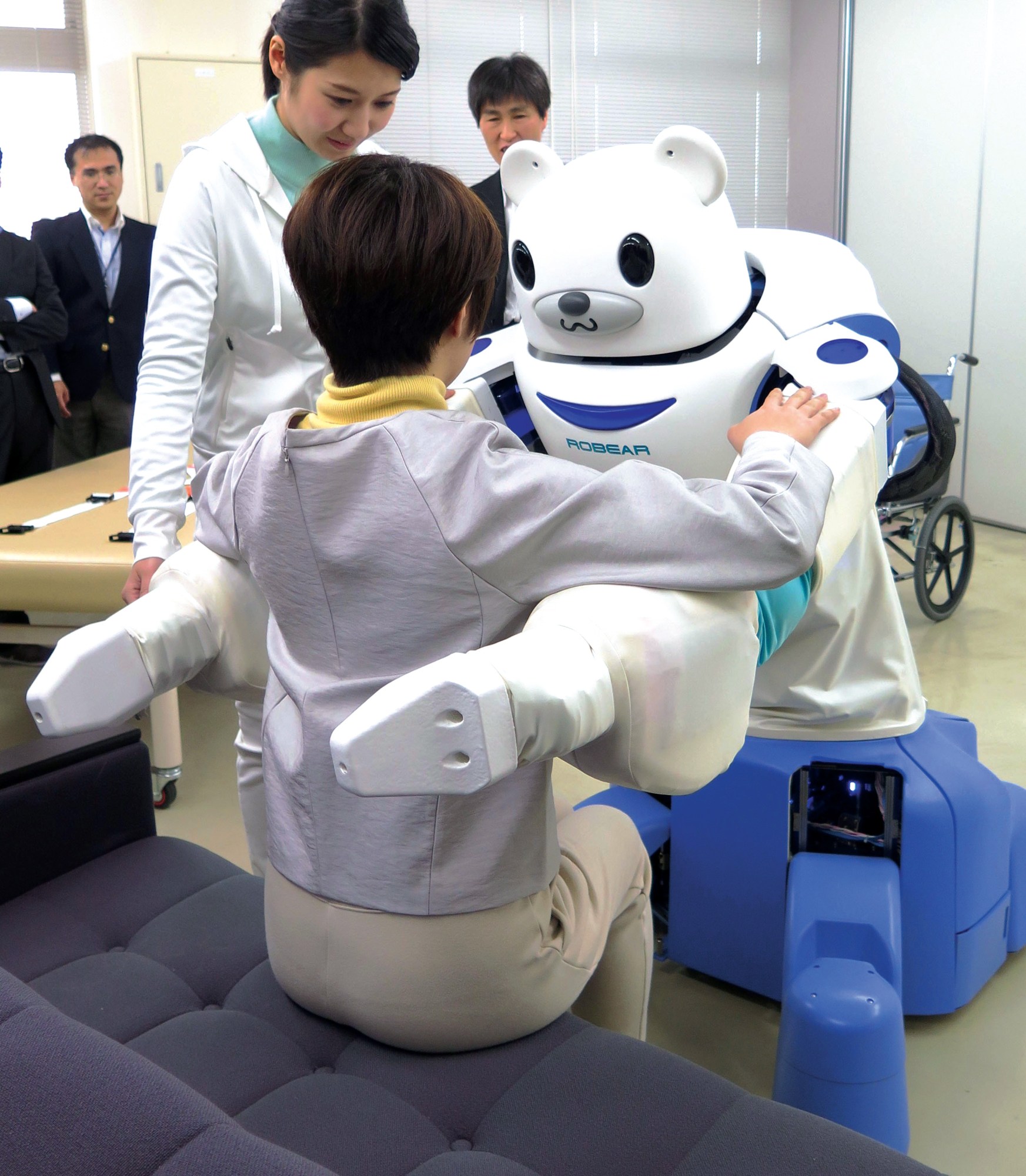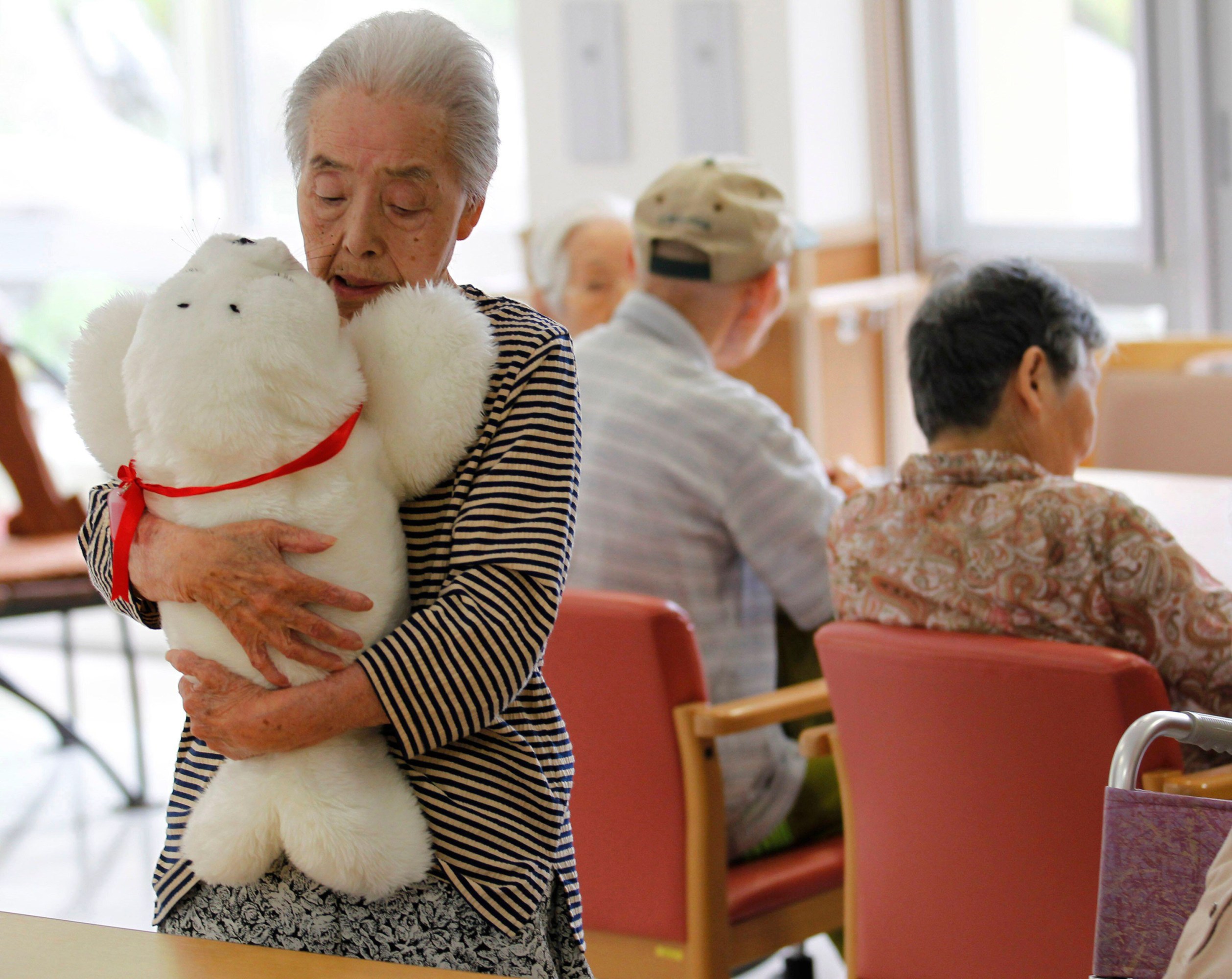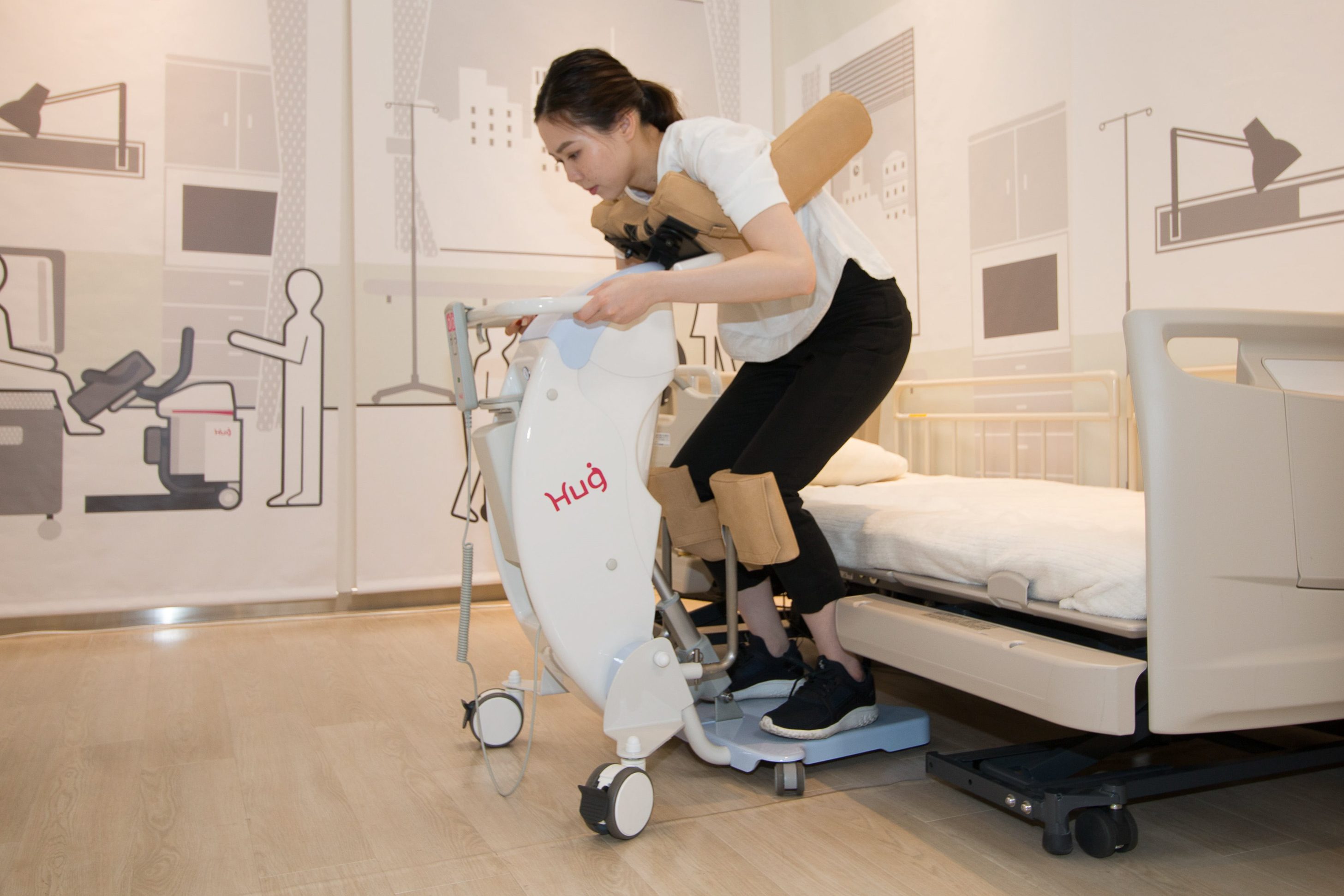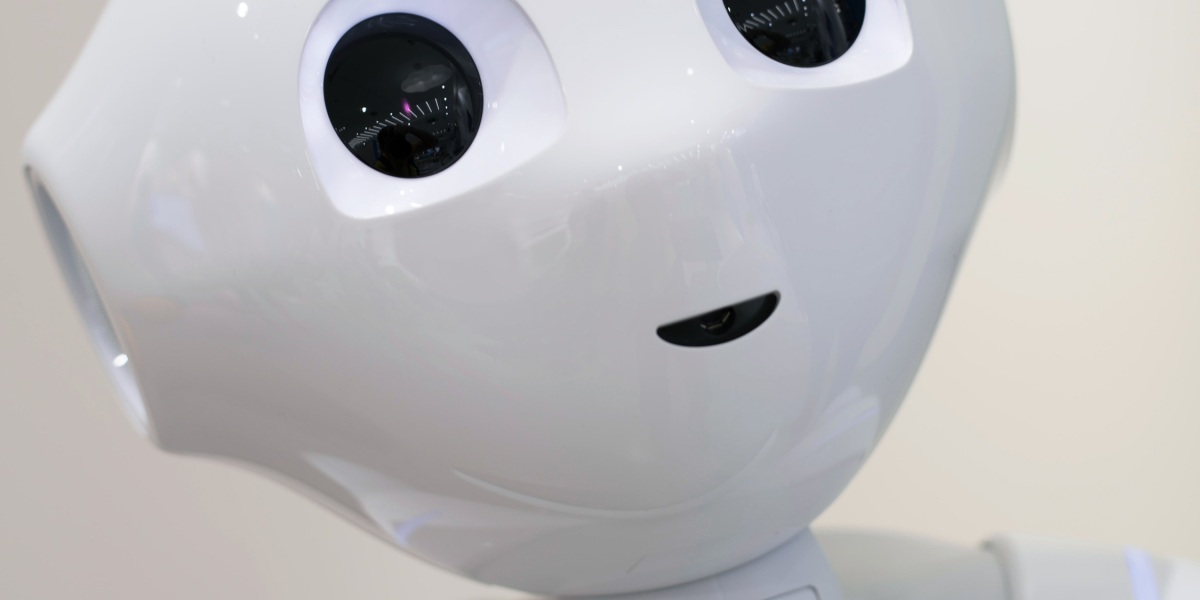Inside Japan’s long experiment in automating elder care
It’s a picture you may have seen before: a large white robot with a cute teddy bear face cradling a smiling woman in its arms. Images of Robear, a prototype lifting robot, have been reproduced endlessly. They still hold a prominent position in Google Image search results for “care robot.” The photos seem designed to evoke a sense of how far robots have come—and how we might be able to rely on them in the near future to help care for others. But devices such as Robear, which was developed in Japan in 2015, have yet to be normalized in care facilities or private homes.
Why haven’t they taken off? The answer tells us something about the limitations of techno-solutionism and the urgent need to rethink our approach to care.
Japan has been developing robots to care for older people for over two decades, with public and private investment accelerating markedly in the 2010s. By 2018, the national government alone had spent well in excess of $300 million funding research and development for such devices. At first glance, the reason for racing to roboticize care may seem obvious. Almost any news article, presentation, or academic paper on the subject is prefaced by an array of anxiety-inducing facts and figures about Japan’s aging population: birth rates are below replacement levels, the population has started to shrink, and though in 2000 there were about four working-age adults for every person over 65, by 2050 the two groups will be near parity. The number of older people requiring care is increasing rapidly, as is the cost of caring for them. At the same time, the already large shortage of care workers is expected to get much worse over the next decade. There’s little doubt that many people in Japan see robots as a way to fill in for these missing workers without paying higher wages or confronting difficult questions about importing cheap immigrant labor, which successive conservative Japanese governments have tried to curtail.
Care robots come in various shapes and sizes. Some are meant for physical care, including machines that can help lift older people if they’re unable to get up by themselves; assist with mobility and exercise; monitor their physical activity and detect falls; feed them; and help them take a bath or use the toilet. Others are aimed at engaging older people socially and emotionally in order to manage, reduce, and even prevent cognitive decline; they might also provide companionship and therapy for lonely older people, make those with dementia-related conditions easier for care staff to manage, and reduce the number of caregivers required for day-to-day care. These robots tend to be expensive to buy or lease, and so far most have been marketed toward residential care facilities.
A growing body of evidence is finding that robots tend to end up creating more work for caregivers.
In Japan, robots are often assumed to be a natural solution to the “problem” of elder care. The country has extensive expertise in industrial robotics and led the world for decades in humanoid-robot research. At the same time, many Japanese people seem—on the surface, at least—to welcome the idea of interacting with robots in everyday life. Commentators often point to supposed religious and cultural explanations for this apparent affinity—specifically, an animist worldview that encourages people to view robots as having some kind of spirit of their own, and the huge popularity of robot characters in manga and animation. Robotics companies and supportive policy makers have promoted the idea that care robots will relieve the burden on human care workers and become a major new export industry for Japanese manufacturers. The title of not one but two books (published in 2006 and 2011 and written by Nakayama Shin and Kishi Nobuhito, respectively) sums up this belief: Robots Will Save Japan.

The reality, of course, is more complex, and the popularity of robots among Japanese people relies in large part on decades of relentless promotion by state, media, and industry. Accepting the idea of robots is one thing; being willing to interact with them in real life is quite another. What’s more, their real-life abilities trail far behind the expectations shaped by their hyped-up image. It’s something of an inconvenient truth for the robot enthusiasts that despite the publicity, government support, and subsidies—and the real technological achievements of engineers and programmers—robots don’t really feature in any major aspect of most people’s daily lives in Japan, including elder care.
A major national survey of over 9,000 elder-care institutions in Japan showed that in 2019, only about 10% reported having introduced any care robot, while a 2021 study found that out of a sample of 444 people who provided home care, only 2% had experience with a care robot. There is some evidence to suggest that when robots are purchased, they often end up being used for only a short time before being locked away in a cupboard.
My research has focused on this disconnect between the promise of care robots and their actual introduction and use. Since 2016, I have spent more than 18 months conducting ethnographic fieldwork in Japan, including spending time at a nursing care home that was trialing three of them: Hug, a lifting robot; Paro, a robotic seal; and Pepper, a humanoid robot. Hug was meant to prevent care workers from having to manually lift residents, Paro to offer a robotic form of animal therapy (while also acting as a distraction aid for some people with dementia who made repeated demands of staff throughout the day), and Pepper to run recreational exercise sessions so that staff would be freed for other duties.

But problems quickly became apparent. Staff stopped using Hug after only a few days, saying it was cumbersome and time consuming to wheel from room to room—cutting into the time they had to interact with the residents. And only a small number of them could be lifted comfortably using the machine.
Paro was received more favorably by staff and residents alike. Shaped like a fluffy, soft toy seal, it can make noises, move its head, and wiggle its tail when users pet and talk to it. At first, care workers were quite happy with the robot. However, difficulties soon emerged. One resident kept trying to “skin” Paro by removing its outer layer of synthetic fur, while another developed a very close attachment, refusing to eat meals or go to bed without having it by her side. Staff ended up having to keep a close eye on Paro’s interactions with residents, and it didn’t seem to reduce the repetitive behavior patterns of those with severe dementia.
Pepper was used to run recreation sessions that were held every afternoon. Instead of leading an activity like karaoke or having a conversation with residents, a care worker would spend some time booting up Pepper and wheeling it to the front of the room. It would then come to life, playing some upbeat music and a prerecorded presentation in its chirpy voice, and launch into a series of upper-body exercises so the residents could follow along. But care workers quickly realized that to get residents to participate in the exercise routine, they had to stand next to the robot, copying its movements and echoing its instructions. Since there was a relatively small set of songs and exercise routines, boredom also started to set in after a few weeks, and they ended up using Pepper less often.
Care crises aren’t the natural or inevitable result of demographic aging. Instead, they are the result of specific political and economic choices.
In short, the machines failed to save labor. The care robots themselves required care: they had to be moved around, maintained, cleaned, booted up, operated, repeatedly explained to residents, constantly monitored during use, and stored away afterwards. Indeed, a growing body of evidence from other studies is finding that robots tend to end up creating more work for caregivers.
But what was interesting was the type of work that they created. Whereas previously care workers came up with their own recreational activities, now they just had to copy Pepper. Instead of conversing and interacting with residents, now they could give them Paro to play with and monitor the interaction from a distance. And where workers who had to lift a resident had used the occasion to have a chat and build their relationship, those using the Hug machine had to shorten the interaction so they’d have time to wheel the robot back to where it was stored. In each case, existing social and communication-oriented tasks tended to be displaced by new tasks that involved more interaction with the robots than with the residents. Instead of saving time for staff to do more of the human labor of social and emotional care, the robots actually reduced the scope for such work.
What kind of future do such devices point to, and what would it take for them to become a “solution” to the care crisis?Bearing in mind the imperative to control costs, it seems that the most likely scenario for wide-scale use of such robots in residential care would involve—unfortunately—employing more people with fewer skills, who would be paid as little as possible. Care facilities would likely need to be much larger and highly standardized to enable economies of scale that could make the cost of robotic devices affordable, since they are generally expensive to buy or lease even with government subsidies. Because workers might not have to interact with residents as much and could theoretically get by with less care training, experience, and facility with the Japanese language, they could potentially be brought in more easily from abroad. In fact, such a vision might already be in the works: migration channels in Japan have been rapidly opened up over the past few years as concern has grown about the country’s labor shortages, and consolidation in the care industry has been accelerating.
Such a scenario may eventually make some kind of financial sense, but it seems far from many people’s understanding of what constitutes good care—or decent work. In the words of roboticist and professor of robot ethics Alan Winfield, talking about the wider application of AI and robots: “The reality is that AI is in fact generating a large number of jobs already. That is the good news. The bad news is that they are mostly crap jobs … It is now clear that working as human assistants to robots and AIs in the 21st century is dull, and both physically and/or psychologically dangerous … these humans are required to behave, in fact, as if they are robots.”
Interest in care robots continues. The European Union invested €85 million ($103 million) in a research and development program called “Robotics for Ageing Well” in 2015–2020, and in 2019, the UK government announced an investment of £34 million ($48 million) in robots for adult social care, stating that they could “revolutionize” the care system and highlighting Paro and Pepper as successful examples.
But care is not simply a logistical matter of maintaining bodies. It is a shared social, political, and economic endeavor that ultimately relies on human relationships. Likewise, care crises aren’t the natural or inevitable result of demographic aging, as is often suggested by crisis narratives used to explain and promote care robots. Instead, they are the result of specific political and economic choices.
While care robots are technologically sophisticated and those promoting them are (usually) well intentioned, they may act as a shiny, expensive distraction from tough choices about how we value people and allocate resources in our societies, encouraging policy makers to defer difficult decisions in the hope that future technologies will “save” society from the problems of an aging population. And this is not even to mention the potentially toxic and exploitative processes of resource extraction, dumping of e-waste in the Global South, and other negative environmental impacts that massively scaling up robotic care would entail.

Alternative approaches are possible and, indeed, readily available. Most obviously, paying care workers more, improving working conditions, better supporting informal caregivers, providing more effective social support for older people, and educating people across society about the needs of this population could all help build more caring and equitable societies without resorting to techno-fixes.Technology clearly has a role to play, but a growing body of evidence points to the need for far more collaboration across disciplines and the importance of care-led approaches to developing and deploying technology, with the active involvement of the people being cared for as well as the people caring for them.
Like many depictions of robots, the images of Robear conceal as much as they reveal. Robear was an experimental research project never actually used in a care home setting, being too impractical and expensive for real-life deployment. The project has long since been retired, and its inventor has claimed that it was not a solution to the problems facing the care industry in Japan; he said migrant labor was a better answer. Since my fieldwork ended, Pepper too has been discontinued. But such robots continue to have a long afterlife, particularly in online media—projecting and maintaining a techno-orientalist image of a futuristic Japan. This may in fact be their most successful role to date.
James Wright is a research associate at the Alan Turing Institute and the author of Robots Won’t Save Japan: An Ethnography of Eldercare Automation.



